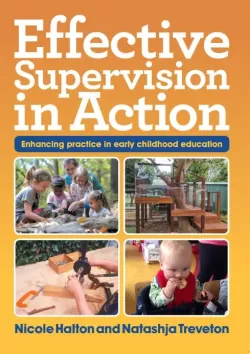June 2025 Newsletter
Engaged educators: active supervision
One of the most critical components of high-quality early childhood education is active supervision. More than just keeping an eye on children, active supervision is a dynamic, intentional approach to ensuring every child’s safety, supporting positive behaviour, and fostering meaningful learning experiences throughout the day.
Effective supervision in childcare involves direct, attentive supervision where caregivers are constantly alert and engaged, able to see and hear all children, and near enough to provide immediate assistance. Active supervision isn’t just about watching; it’s about connecting, anticipating, and responding thoughtfully to support each child’s safety, wellbeing, and learning.
If children feel safe, they can take risks, ask questions, make mistakes, learn to trust, share their feelings, and grow.
Alfie Kohn, author and parenting educator
As the heart of early childhood education, your role in observing, anticipating, and responding to children’s needs is crucial. Whether you're on the playground, in the classroom, or during transitions, your role in maintaining a safe and nurturing environment will enhance the meaningful connections that make a difference in every child’s experience. Active supervision is a key practice that empowers you to be fully engaged and intentional in your work with young children.
As passionate and engaged educators, your presence and attentiveness create a classroom environment where children feel seen, valued, and supported. By staying alert, proactive, and deeply involved throughout the day, children in your care will thrive.
Key elements of effective supervision
- Direct and Active:
Educators are actively engaged in observing, listening, and interacting with children to ensure safety and wellbeing. - Constant Awareness:
Educators are vigilant and aware of the children's actions and environment, anticipating potential risks and responding promptly. - Clear Lines of Sight:
Educators are positioned in a way that allows them to see and hear all children, both indoors and outdoors. - Environment Setup:
The environment is set up to facilitate supervision, with clear paths and safe play areas where children are easily seen and heard. - Close Proximity:
Educators are close enough to children to provide immediate assistance if needed. - Age-Appropriate Supervision:
Supervision is based on the child's age, developmental stage, and individual needs. - Accountability:
Clear accountability measures, such as staff being aware of all children at all times. - Active Listening:
Attentive listening is crucial for identifying potential dangers or concerns expressed by the children. - Regular Scanning:
Educators regularly scan the room or playground to ensure all children are present and are engaged in safe activities. - Counting Heads:
Frequent head counts, especially during transitions, help ensure no children are left behind. - Anticipating Behaviour:
Educators use their knowledge of the children to anticipate their actions and potentially dangerous situations. - Engaging and Redirecting:
Engage with children in positive ways and redirect them from unsafe behaviours. - Clear Communication:
Have clear communication with each other and with the children to ensure safety and wellbeing.
Listen to the children, Learn about them, Learn from them. Think of the children first.
Mr. Rogers, children’s television host and author
Nurturing a sense of wellbeing and belonging supports children as they learn about and investigate the world around them. This sense is fostered through reciprocal relationships with people and places where each child is valued both as a gift and for their gifts.
Reference: British Columbia Early Learning Framework, p. 67
Resources to explore
The following books and websites provide principles and practices of active supervision in early learning environments:
- Chapter 2 from Safety, Health and Nutrition in Early Childhood Education: Preventing Injury and Protecting Children’s Safety
https://pressbooks.atlanticoer-relatlantique.ca/ecenutrition/chapter/chapter-two-preventing-injury-protecting-childrens-safety/ - Center for Inclusive Child Care Tip Sheet: Active Supervisionhttps://www.inclusivechildcare.org/sites/default/files/courses/swf/Active%20Supervision-Free%20Time.pdf
- Center for Inclusive Child Care Tip Sheet: Active Supervision Outsidehttps://www.inclusivechildcare.org/sites/default/files/courses/swf/Active%20Supervision-Outside.pdf
- Ontario College of Early Childhood Educators Practice Note: Professional Supervision of Children
https://www.college-ece.ca/en/Documents/Practice_Note_Professional_Supervision.pdf -
Safety Checklists from Well Beings: A Guide to Health in Child Care
https://caringforkids.cps.ca/wellbeings/resources -
Child and Nature Alliance Canada - Risk-Benefit Assessment for Outdoor Play: A Canadian Toolkit
https://childnature.ca/wp-content/uploads/2020/09/2019-11-03-CANADA-RBAT-ENGLISH-1.pdf -
Video: Get your supervision active
https://earlychildhood.qld.gov.au/sector-news-and-resources/news-for-educators-and-service-providers/get-your-supervision-active -
Active Supervision at-a-glance: six strategies to keep children safe
https://www.nmcaacc.com/uploads/5/5/0/4/55044167/active_supervision_at_a_glance.pdf
Book Nook
“Effective Supervision in Action: Enhancing practice in early childhood education” is your guide to creating safe, welcoming, and inspiring spaces where children can truly thrive. Inside, you’ll discover supervision ;is so much more than simply keeping an eye on children – it’s about being present, engaged, and intentional in every moment.
This book invites you to thoughtfully arrange your environment to minimise risks while sparking curiosity and joyful learning. You’ll find practical ideas for building routines and rhythms that ensure that children have their needs met. Most importantly, it highlights the significance of really knowing each child – their unique interests, needs, and stages of development – so that your supervision practices are responsive and effective.” (From the publisher)
Learn more here: https://www.inspiredec.com/products/effective-supervision-in-action-enhancing-practice-in-early-childhood-education
Explore
Activity idea:
Role-play active supervision scenarios with your team! Discuss how you would respond to demonstrate active and effective supervision.
Scenario 1: Outdoor play area oversight
In an outdoor play area, a group of preschoolers is engaged in various activities. The educator actively scans the play area, ensuring there are no potential hazards. While observing, the educator notices a child attempting to climb a structure beyond their capability. The educator, maintaining continuous scanning, promptly intervenes, guiding the child to a more suitable and safer play structure. This demonstrates active supervision by preventing a potential safety risk through vigilant observation and timely intervention.
Scenario 2: Classroom group activity
During a group activity in a child care classroom, the educator strategically positions herself to have clear visibility of all children. While facilitating the activity, the educator listens closely to the children's conversations. One child express feeling unwell but hesitates to speak up. The educator, through active listening, notices the subtle cues and approaches the child to inquire further. By responding promptly to the child's needs, the educator exemplifies active supervision, ensuring the wellbeing of the child and maintaining a supportive learning environment.
Grow

Reflective questions can help you deepen your awareness of how active supervision can nurture joy and connection. Consider:
- How present and attentive am I during supervision? Do I balance watching for safety with tuning in to moments of joy and connection?
- In what ways do I create an environment where children feel safe and supported to express themselves freely?
- How do I actively engage with children during supervision to promote positive relationships?
- What strategies do I use to notice and respond to children’s emotional states?
- Am I facilitating cooperative play and social interaction intentionally? How do I support children in developing empathy and kindness?
- What moments of joy or connection have I observed today, and how did my supervision contribute to them?
You can’t teach children to behave better by making them feel worse. When children feel better, they behave better.
Pam Leo, author
